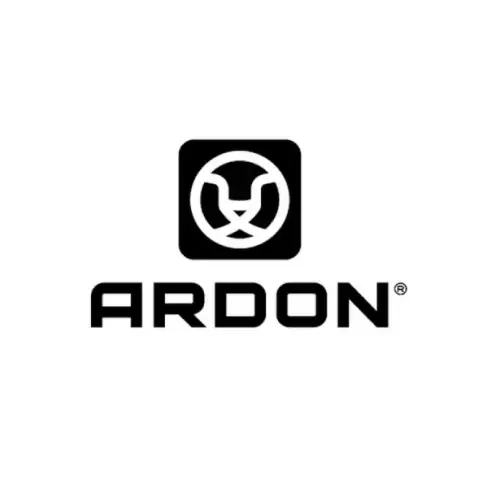Ardon Safety Bricklow S3 Safety Shoes
Ardon Safety
visit storeProduct description
Product Features:
- Upper made of durable textile material and leather in toe and heel area
- Water-resistant finish
- Anatomically shaped pull-on insole for enhanced comfort
- Composite toe cap and flexible Kevlar insole for safety
- EVA/rubber sole providing cushioning and SRC slip protection
Technical Details:
- Upper: Durable textile material / leather
- Lining: MESH laminated breathable fabric
- Sole: EVA/rubber, glued
- Standards: EN 20345:2011
- Weight: 520 g (per shoe, size 42)
The method used to secure the shoe to your foot, affecting how easy it is to put on and take off.
Indicates whether the shoe is designed for men's, women's, or unisex foot anatomy to ensure proper fit and comfort during wear.
Indicates the level of protective features, from basic safety compliance to enhanced protection with additional guards and reinforcements.
Anti-slip soles provide superior grip, keeping you safe and steady on challenging surfaces.
Protect your feet from sharp objects and unseen hazards, giving you peace of mind on any job site.
Shock-absorbing soles provide cushioned comfort, reducing impact and foot fatigue for all-day wear.
Oil-resistant soles ensure secure footing and lasting durability in oily environments.
The material used in the protective toe cap, determining the level of impact protection, weight, and suitability for different work environments.
The total weight of the shoe, affecting comfort and fatigue during long work shifts. Lighter shoes reduce leg strain and improve mobility.
The interior material that lines the inside of the shoe, affecting comfort, moisture management, breathability, and temperature regulation during wear.
- Heat & Flame Resistance
- Impact Resistance
- Electrical Protection
- Water Resistance
- Slip Resistant
Request a free sample
Test first and buy later. Visit any product page to request your free sample.
Standards and labels
Test results
General Requirements CRThe standard EN ISO 20345:2011 encompasses general requirements for safety footwear to ensure they provide adequate protection in various occupational environments. Rating 'CR' signifies that the footwear has a cut resistant upper ensuring enhanced protection. The test method involves assessing the material's resistance to splitting or cracking under certain conditions, which simulates real-world industrial hazards involving sharp objects or surfaces. Practically, this result ensures that the footwear is suitable for environments where there is a risk of materials splitting or getting caught, thereby providing essential safety benefits to the user.
General Requirements EThe standard EN ISO 20345:2011 encompasses general requirements for safety footwear to ensure they provide adequate protection in various occupational environments. The specification of test result E indicates that the footwear has undergone and successfully met the electrical insulation performance requirements. This specific test assesses footwear's ability to prevent electrical current from passing through the body from the ground, a critical safety feature for those working in environments with electrical hazards. The test involves placing the footwear on a conductive surface and measuring the resistance when a specified voltage is applied, thereby ensuring the footwear provides the necessary protection against electrical hazards. This result is significant for safety footwear, guaranteeing wearer protection in electrical environments and reducing the risk of electrocution, thus contributing to safety standards compliance for occupational footwear in the European market.
General Requirements FOThe standard EN ISO 20345:2011, specifically its General Requirement FO, pertains to footwear containing fuel oil-resistant outsoles. When footwear under this specification successfully meets the FO requirement, it implies that the footwear's outsole has been tested and confirmed to resist degradation due to contact with fuel oil. The test involves exposing the outsole material to fuel oil for a determined period, typically 22 hours, at a controlled temperature of 22°C. This test assesses the change in volume and properties of the outsole following fuel oil exposure by measuring its tensile strength and elongation before and after the exposure. For procurement professionals, a positive FO result indicates that the footwear's outsole will maintain its mechanical performance and integrity when in contact with fuel oil, making it suitable for industries where oil exposure is frequent, providing durability and reliable performance under such conditions.
General Requirements HROThe HRO result listed in the standard EN ISO 20345:2011 pertains to the heat resistance of the outsole of safety footwear. This test result confirms that the outsole is capable of withstanding exposure to high temperatures without degrading its physical properties and performance. The test method requires that the outsole of the footwear be exposed to 300°C for a minimum of 60 seconds under specified conditions, during which the outsole should not melt or crack, ensuring that it continues to provide protection against hot environments. Since the HRO classification attests to heat resistance, this feature is particularly important in industries such as metallurgy or construction, where contact with hot surfaces is a common hazard. Understanding this result can assist procurement professionals in sourcing appropriate safety footwear that meets the required durability and performance in high-temperature working conditions.
General Requirements PEN ISO 20345:2011 specifies safety requirements for footwear used in a range of industries to protect wearers from mechanical risks and other workplace hazards. The 'P' designation indicates that the footwear has been tested for penetration resistance, which means it can withstand a force of up to 1100 Newtons from sharp objects like nails. This test is conducted by applying a specified force to a nail or similar sharp object against the sole of the footwear to ensure it cannot penetrate through to the foot. Footwear meeting this requirement is essential for industries where workers are at risk of stepping on sharp objects, such as construction or manufacturing, providing a critical level of protection to the wearer's feet.
General Requirements S3The EN ISO 20345:2011 standard specifies the general safety requirements for protective footwear used in various industries. The S3 designation under this standard means the footwear has met certain criteria, including basic toe protection, anti-static properties, energy absorption of the seat region, water resistance, fully enclosed heel, cleated outsole, and penetration resistance by a steel midsole. This classification involves specific test methods like compression and impact tests on toe protection, antistatic resistance tests, energy absorption verification at the heel section, water penetration, and absorption tests to ascertain the upper material's resistance, and penetration resistance tests to ensure the protective features of the outsole and midsole. For industries requiring protective footwear that can withstand mechanical risks, moisture, and sharp objects, achieving an S3 result guarantees a high safety level, making footwear that meets this requirement suitable for environments with increased moisture and at risk of foot penetration by sharp objects.
General Requirements WRThe standard EN ISO 20345:2011 includes various general requirements for safety footwear, among which the WR test result indicates that the footwear has been certified as water-resistant. This test result specifically means that the footwear has successfully passed evaluations confirming its capability to prevent water penetration under specified conditions. The test method involves the footwear being subject to a dynamic water test, where it is exposed to mechanical action in the presence of water for a certain period to simulate wearing conditions in wet environments. The practical implication of this result for safety footwear is significant as it ensures that the footwear provides adequate protection against water ingress, which is vital for individuals working in environments where exposure to water or dampness is frequent. This certification lends reassurance that the footwear will maintain its performance and comfort in challenging wet conditions, thereby improving wearer safety and job performance.
General Requirements AEN ISO 20345:2011 sets standards for safety footwear intended for professional use, ensuring that such footwear provides adequate protection according to specified safety requirements. Rating A means the footwear has antistatic proterties. The practical implication of an A rating result is that the footwear is certified as having met the necessary conditions for standard professional use, which can reassure procurement professionals of the product's basic safety compliance specific to an industrial or harsh working environment. Such comprehensive testing and certification mean that businesses can ensure worker safety and regulatory compliance when procuring such footwear.
CE Marking is a label that shows a product meets certain safety and environmental standards set by the European Union. To get the CE Marking, a company must test and certify their product meets these standards. CE Marking is required for many products sold in the EU, including electronics, machinery, toys and medical devices. It helps ensure that products are safe for consumers and the environment, and allows for easy trade within the EU.
Textiles are materials made from fibers, such as cotton, wool, or polyester. In Europe, there are rules for how textiles should be made, sold, and labeled. These rules are set by the European Union. These rules ensure that textiles are safe and do not contain harmful chemicals, that they are labeled correctly and that the use of certain dangerous chemicals are banned. These rules are set to protect the health and safety of consumers and the environment. Companies that make or sell textiles in the EU must comply with these rules.
Ardon Safety delivery terms
Free delivery when you order more than 1 650,00 kr from Ardon Safety
Supplier shipping fee 60,00 kr
Brand minimum 1 400,00 kr
784,47 kr
Shipping fee is 60,00 kr for orders under 1 650,00 kr
Sold in units of one pair
Need larger quantities?
Other products you may like
Recently viewed
Need help?
Get help from our experts
Other products you may like
Similar products you may like



Find +150,000 products from hundreds of brands
Autonomous sourcing platform
The most efficient way to source and order supplies for your operations
Sourcing
Ordering
List products you’re looking for and we’ll find the best products and prices for you – all for free.
Need help?
Get help from our experts
